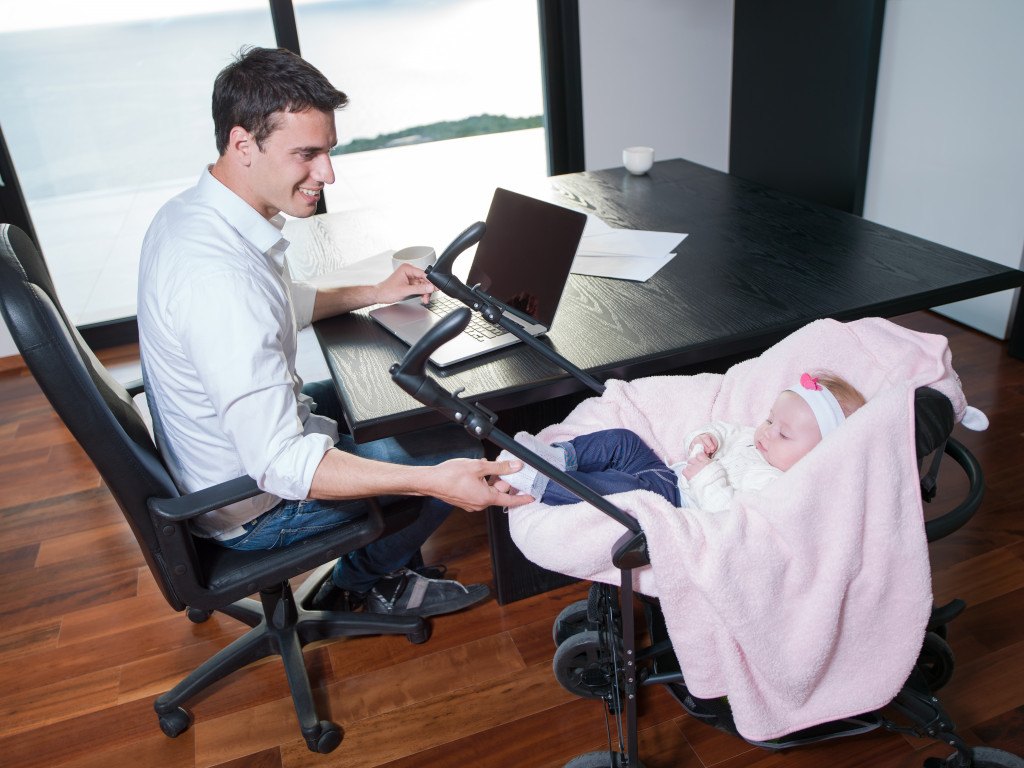The home office is rapidly becoming an essential part of any home. There are many reasons for this, mainly because of the Covid-19 pandemic. People had to work from home to prevent the further spread of the virus, which had already claimed over six million deaths.
Technology has made it possible for people to work from home. You can save money on daycare, commuting costs, and even office clothes with a home office.
Another reason the home office is becoming more popular is because of the rise of telecommuting. Companies allow their employees to work from home. If you have a private workspace, you can take advantage of this opportunity and make money while working from home.
However, current home designs have many comforting aspects, making it challenging to focus on work and productivity. Fortunately, you can renovate the dedicated home workspace to a layout similar to a private office room. Here are the things you might have to do to accomplish the goal.
Identifying or Creating the Ideal Space
A home office is a great way to save money on child care and commuting costs, but many homeowners need to repurpose areas like the basement or the bedroom for a private office. It can be challenging and costly, but it is possible.
Suppose you have a room you can use as an office, excellent! If not, here are some ways to create a space for your home office:
- Repurpose a corner of the living room: You can easily set up a small desk and chair to make a makeshift office if you have an unused corner in the living room. It is an excellent option if you don’t have extra space to spare.
- Use the guest bedroom: If you have guests stay over infrequently, you can use the guest bedroom as your home office. This way, you can still have a place for guests when they come to town while also having a private workspace.
- Convert the basement: The basement is often an underutilized space in many homes. You can easily convert a basement into a home office if you have a basement. This option gives you the most privacy and the most space for work.
- Create a loft office: You can create a loft office if you have a high ceiling in your home. It is an excellent option if you don’t have an extra room to spare but want a private workspace.
Creating the Office Design
Once you’ve identified or created the ideal space for your home office, you need to design it to be productive and comfortable. Here are some tips:
- Ensure plenty of natural light: Natural light is vital for productivity and comfort. If possible, position your desk near a window to take advantage of natural light.
- Add some greenery: Adding some plants to your office can boost your mood and productivity. Choose low-maintenance plants that don’t require a lot of care.
- Keep the space clean and organized: A cluttered and messy office can distract and make it difficult to focus on work. Make sure to keep the room clean and organized for optimal productivity.
- Invest in comfortable furniture: You’re going to be spending a lot of time in your home office, so you want to make sure the furniture is comfortable. Invest in a good chair and desk that will be comfortable to work at for long periods.
- Personalize the space: Add some personal touches to the area to make it feel like your own. Hang some artwork or photos, add some fun office supplies or anything else that will make the space feel like yours.
Outfitting the Office

Once you’ve designed the perfect home office, you need to outfit it with the right equipment and supplies. Here are some things you might need:
- A computer: If you don’t already have a laptop for your home office, you’ll need to get one. Choose a computer if you want to be able to work from anywhere in your home. Or, choose a desktop if you want a more powerful machine for video editing or graphic design.
- A printer: A printer is essential for any home office. Choose a wireless printer so you can print from anywhere in your home.
- Office furniture: In addition to a comfortable chair and desk, you might want to invest in other office furniture. A filing cabinet is essential for storing important documents. And a bookshelf can help keep books or reference materials.
- Office supplies: Fill up on office supplies like pens, paper, notebooks, and anything else you might need to do your work.
- Decor: Add personal touches to the space with decor items like artwork, photos, or knickknacks.
If you can spare a few expenses, getting living room furniture might be ideal. Those household items are flexible enough to become part of the office design if you eventually move or change the office around.
If you don’t have the budget, you can repurpose some household items in other rooms for your home office. For example, you can use a spare dining room chair as your office chair. Or, you can use a bookcase from the living room to store books and supplies in your home office.
Designing a home office doesn’t have to be complicated. You can easily create a productive and comfortable space for uninterrupted work by following these tips.




